Our sun, like other low-mass stars, will eventually become a white dwarf. Because white dwarfs are small, dense remnants of low-mass stars. However, the fate of a star’s remnant and the planets it left behind is much more dynamic and varied than was previously believed. Furthermore, astronomers are still baffled by certain white dwarfs. White dwarfs were thought to be dead stars for a long time. However, astronomers have found some unexpected activity among these compact stellar remnants lately. Some were discovered to be enormous diamond spheres; others exhibited peculiar eruptions and pulsations, and a few even came back to life. It turns out that the destiny of planets in orbit is more uncertain than previously believed.
What are white dwarfs and how do they form?
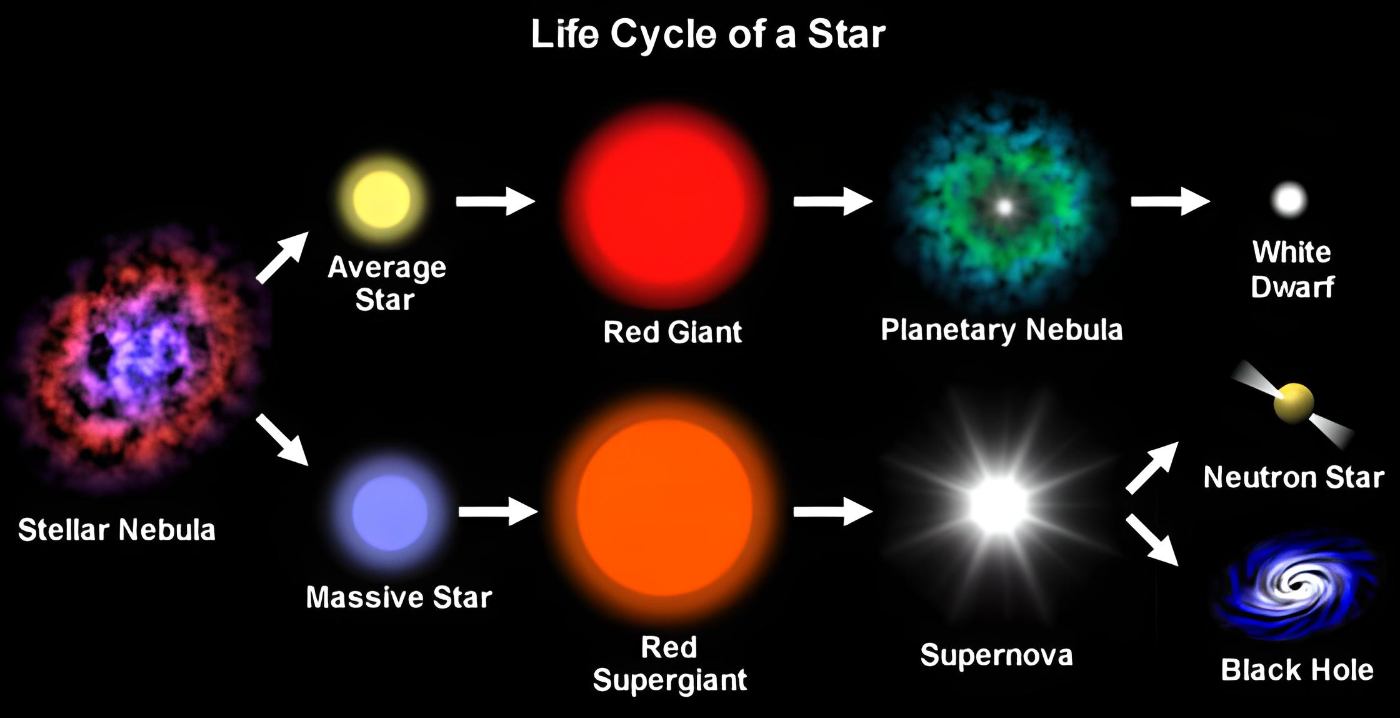
When massive stars like the Sun or red dwarfs like our nearest neighbor Proxima Centauri approach the end of their lives, they transform into white dwarfs. As a result, they will end up like the overwhelming majority of stars in our galaxy and beyond. So, what causes a star to collapse into a white dwarf? For any matter, what features define it?
The Sun’s nuclear fusion is slowing, and in another 7 billion years or more, all of its hydrogen and helium fuel will be gone. Now that our star has expanded to the size of a red giant, the radiation pressure exerted from inside is unable to overcome the pull of gravity, and the dying process has begun.
The Sun now repeatedly erupts, sending pieces of its outer crust hurtling into space in what may be described as an “age tremor.” This results in a reduction in mass equal to around 50%. Meanwhile, the core of our dying star grows denser as a result of intense compression brought on by the absence of counterpressure from nuclear fusion. When this transition is complete, the Sun will have become a white dwarf, a stellar remnant made nearly entirely of highly compressed nuclear material.
Compact and surprisingly weighty
Approximately 8.5 light-years distant, Sirius B, the companion of the brightest star in the night sky, provides a glimpse of what our Sun would look like as a white dwarf. The nearest white dwarf to Earth has a mass of roughly 0.98 solar masses despite being about the size of the Earth. A teaspoon of it would weigh 5 tons since its substance is so densely packed.
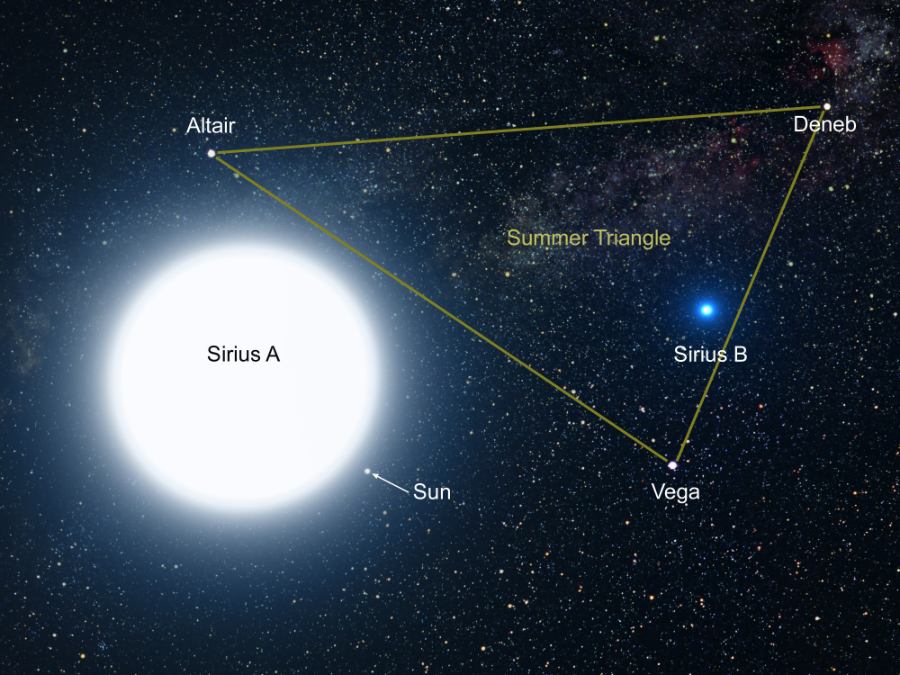
Thus, in terms of its guild, Sirius B is quite representative. Because white dwarfs weigh between 0.5 and almost 1.4 solar masses and have one to twice the diameter of Earth. Sirius B’s surface has a gravity that is around 375,000 times greater than that of Earth due to the planet’s extreme density. On this star remnant, a person weighing roughly 80 kilograms would weigh about 30 million kilograms.
Sirius B has such a strong gravitational pull that its light dims when it escapes its gravity well, an effect that is seen as a gravitational redshift of the light’s wavelengths by around 0.1 nanometers.
Size paradox and degenerate matter
Unlike “regular” celestial entities, white dwarfs actually lose mass as they expand in size. A white dwarf identified in 2021 at around 150 light-years away, for instance, has a mass of 1.35 solar masses, which is near the limit for such stellar remains. Meanwhile, ZTF J1901+1458 is the tiniest white dwarf ever discovered, with a radius of about 2,140 kilometers, making it scarcely bigger than Earth’s Moon.
But what accounts for this seeming contradiction? The reason for this is because the substance within the white dwarf degenerates, a fundamental alteration that occurs over time. The so-called Pauli principle states that fermionic particles like electrons and quarks cannot coexist in the same spatial location. A certain quantity of empty space is staked out by each of these particles. Since all matter consists of tiny particles, there is a hard limit to how far it can be squashed.
If the force is severe enough, however, the electrons will migrate closer to each other and the nucleus of the atom to escape the stress. Because of this, a white dwarf might contract as its mass grows. In addition, when the electrons’ resistance to this degeneracy pressure rises, a force is produced that operates in opposition to gravity. White dwarfs don’t collapse because their internal substance is so degenerate.
How many white dwarfs are there?
Though it may seem out of this world, white dwarfs are really rather common in the galaxy. However, scientists believe that there are at least 129 such stars remaining at a near proximity of 65 light years from the sun. Up to 10% of Milky Way stars may have already evolved into white dwarfs. Most stars in the cosmos will eventually degenerate into these tiny, brilliant remnants.
The star type also determines the timing of this event: On average, it takes Sun-like stars like the Sun between 11 and 13 billion years to evolve into white dwarfs. Red dwarfs of considerably lower mass are thought to eventually evolve into white dwarfs as well. Astronomers have yet to find an example of a “dead” red dwarf, given that their lifespans may be anywhere from billions to trillions of years. Presumably, none of these stars have simply reached the end of their life cycle.
How do white dwarfs evolve?
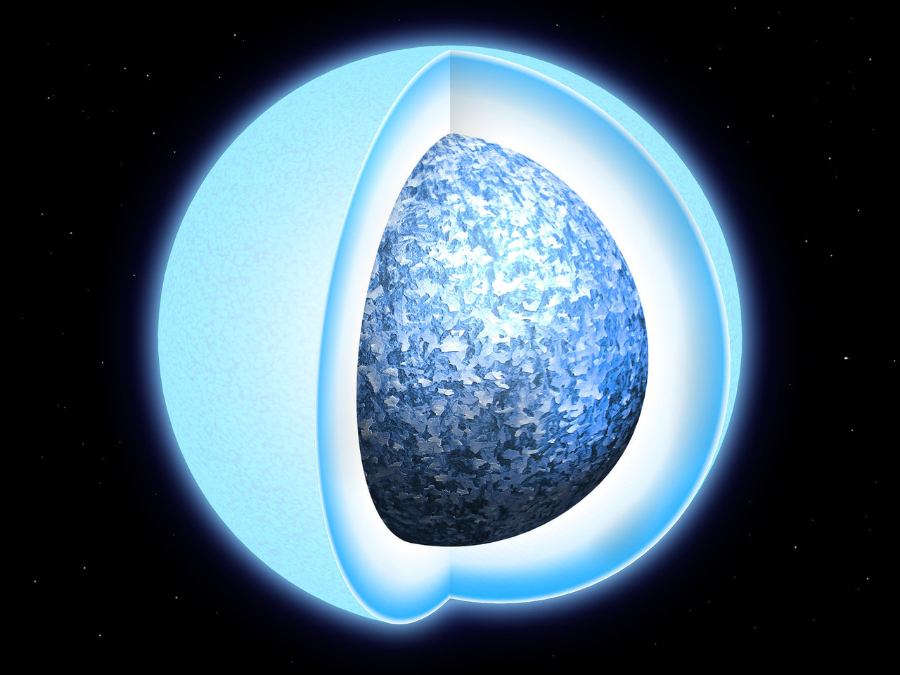
It defies logic that the white dwarf’s heat and light source—the nuclear fusion that was once occurring inside—has stopped. Still, young white dwarfs are very bright and have temperatures several times higher than the Sun.
The stuff inside the star remains very compressed, which is the cause. Radiation from young white dwarfs is very blue-white because they still have enough energy stored in this dense plasma to be heated to around 150,000 Kelvin. The white dwarf’s core typically consists of oxygen, the strongest element, followed by a layer of carbon. In combination, they constitute the bulk of the white dwarf’s mass. Thin hydrogen and helium remain of the stellar envelope may be found on the exterior.
Due to their tiny size and little surface heat loss, white dwarfs cool at a very modest rate. It took the coldest objects yet discovered 11 to 12 billion years, or almost the age of the universe, to reach a temperature of roughly 3,800 Kelvin. It may take such stellar remains hundreds of billions of years to cool to the point where they become cold, gloomy black dwarfs, as predicted by astronomical models.
Largest diamond in the neighborhood galaxy
However, astronomers have known since the 1960s that white dwarfs undergo a fundamental transformation on the inside before this can occur. In cold white dwarfs, the oxygen-carbon plasma supposedly crystallizes into a cubic-centric crystal lattice, turning the star’s innards into a diamond.
About 50 light-years distant, the white dwarf BPM 37093 proved the existence of such diamond dwarfs in 1995. Studies suggest that up to 90% of the 1.1 solar mass, 8,000 km stellar remnant is made of diamond. A diamond with a mass of 5 x 1029 kg would be the biggest known crystal in our local universe. This white diamond dwarf is affectionately known as “Lucy” from the Beatles’ song of the same name (“Lucy in the Sky With Diamonds”).
The Milky Way is filled with millions of “crystal balls”
In 2019, however, a team of researchers headed by Pier-Emmanuel Tremblay of the University of Warwick assessed the temperatures and spectral curves of 15,000 white dwarfs, and they made a startling discovery that suggests “Lucy” is not unique. At certain temperature and brightness levels, the curves displayed a noticeable hump, indicating a “jam” of white dwarfs.
The researchers explain that the white dwarfs spend a longer time in this phase because their latent heat is released during crystallization, causing a mass-dependent blockage in the diagram. They draw the conclusion that our own galaxy contains millions of white dwarfs that have evolved into crystal balls. One day in the far future, the Sun may also become a diamond dwarf.
Supernova, nova, and cannibal stars

White dwarfs don’t appear all that exciting at first look; most people just assume that they radiate as stellar leftovers, becoming colder and darker with time. Though this isn’t usually the case, there are times when it is. Up to the supernova, certain white dwarfs endure dramatic explosions and even resurrection.
When white dwarfs aren’t alone in the universe but instead are members of a binary star system, their unusual behavior stands out. If the two stars are in tight orbits around one another, the dense, massive stellar remnant may act as a stellar cannibal and consume its companion star. The white dwarf will then accrete hydrogen gas in the form of an accretion disk around itself, which will lead to periodic explosions.
These nova produce intense radiation and energy from the rapid fusion of hydrogen. A considerable portion of the white dwarf’s “borrowed” hydrogen shell is ejected in the explosion that follows. The star system is suddenly and brightly illuminated by the nova, sometimes so much so that it temporarily overpowers all other stars in the sky.
The term “nova” comes from the ancient belief that the appearance of a nova signaled the birth of a new star. For instance, Korean astronomers in 1437 reported such an occurrence: One star in the constellation Scorpio became a hundred thousand times brighter than usual on March 11 of that year, completely overwhelming its neighborhood. Once the 14 days were over, the star’s brightness returned to normal. Astronomers didn’t know what caused the “Nova Scorpii 1437” explosion until 2017; it turned out to be a white dwarf in a binary system that continues to have weaker outbursts to this day.
Sakurai’s Object
On the other hand, some white dwarfs see a brief resurgence in stellar activity. “Sakurai’s Star” or “Sakurai’s Object” located in the constellation Sagittarius, was “reborn” in 1996 when it was found by Japanese astronomer Syuichi Nakano. When Nakano first saw the object, he assumed it was a white dwarf experiencing a gradual nova because of its bright yet strangely persistent light.
Oddly enough, the alleged nova’s light spectrum was dominated by oxygen and carbon spectral lines rather than the typical strong hydrogen fingerprints. This suggests that the outburst may have been caused by the detonation of more than just the star remnant’s hydrogen shell. And yet, what was it then? Additional studies indicated that during the next several years, Sakurai’s Object became a deeper red, taking on many of the hallmarks of a red giant, the evolutionary stage from which white dwarfs are born.
This, however, indicates that the white dwarf has restarted its nuclear fusion and returned to its former glory as a real star. Astronomers assume that this occurs due to a so-called “helium flash,” in which the helium in the star remnant rapidly heats up and becomes so dense that helium nuclear fusion ignites for a brief period. Only Sakurai’s Object and the white dwarf V605 Aquilae, located approximately 14,000 light-years away, have been identified by astronomers as stellar remnants.
This rebirth, however, does not endure very long since white dwarfs have such a limited amount of helium. In the interim, Sakurai’s Object has likewise reverted to a white dwarf.
Type 1a supernova
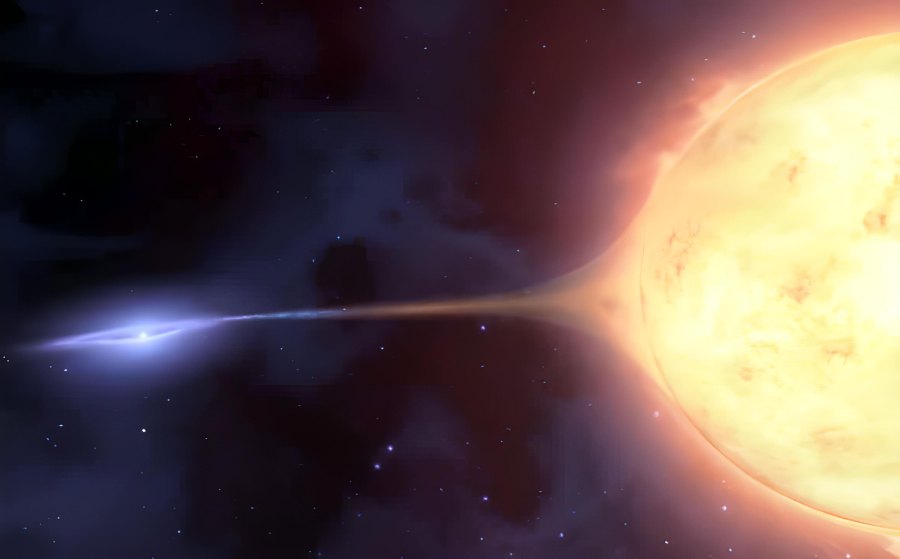
Not all white dwarfs survive their explosions or are reborn. Contrast this with a type 1a supernova, in which the core star itself does not explode but rather its gas shell. When a white dwarf gets very “greedy,” sucking so much mass from its partner that it reaches an upper mass limit, this is what occurs.
1.4 solar masses is the so-called Chandrasekhar limit. Beyond this point, the star remnant collapses because the degenerate stuff within the white dwarf can no longer sustain the gravitational pull pressing inward. As a result of the abrupt rise in pressure and temperature, the carbon in the star’s core ignites, and the white dwarf explodes, all within a matter of seconds.
Type 1a supernova emit the same amount of radiation everywhere in the universe because they always occur at the same critical mass of the stellar remnant, making the exploding stellar remnant temporarily shine 5 billion times brighter than the Sun. For astronomers, type 1a supernova are consequently great aids in establishing distances in the universe and in gauging cosmic expansion. However, a white dwarf experiences total destruction in a type 1a supernova.
The merge of white dwarf stars

White dwarfs can’t be placed in any traditional astronomical classification. They defy standard theories and models because of their massive mass, high velocity, or high magnetic field. This leads us to wonder where and how these exotics came from.
Researchers headed by Mark Hollands of the University of Warwick have located the white dwarf WDJ0551+4135 using data from the European Space Agency’s Gaia satellite, making it one of the closest of these exotics to Earth at a distance of roughly 150 light-years. Hollands claims that this star is unlike anything else in the universe. We have a very good idea of what causes a star to collapse into a white dwarf, and this kind of outcome seems quite improbable.
This white dwarf exhibits multiple characteristics that are rare all at once for a stellar remnant. For comparison, its mass is 1.14 solar masses, making this white dwarf almost twice as massive as the average. Moreover, WDJ0551+4135 is speeding up excessively for a star of its age and temperature. When everything is said and done, the star remnant has an unusual elemental distribution: This white dwarf is unique in that its thin envelope contains carbon and hydrogen instead of the usual helium.
But how can we account for these peculiarities? All of this, according to Hollands and his colleagues, points to the possibility that WDJ0551+4135 did not typically originate from a progenitor star. A star collision, namely the merging of two white dwarfs, is another possible explanation. This would account for the massive size, the very high temperature for its age, and the carbon that has been released from inside.
Tycho’s supernova
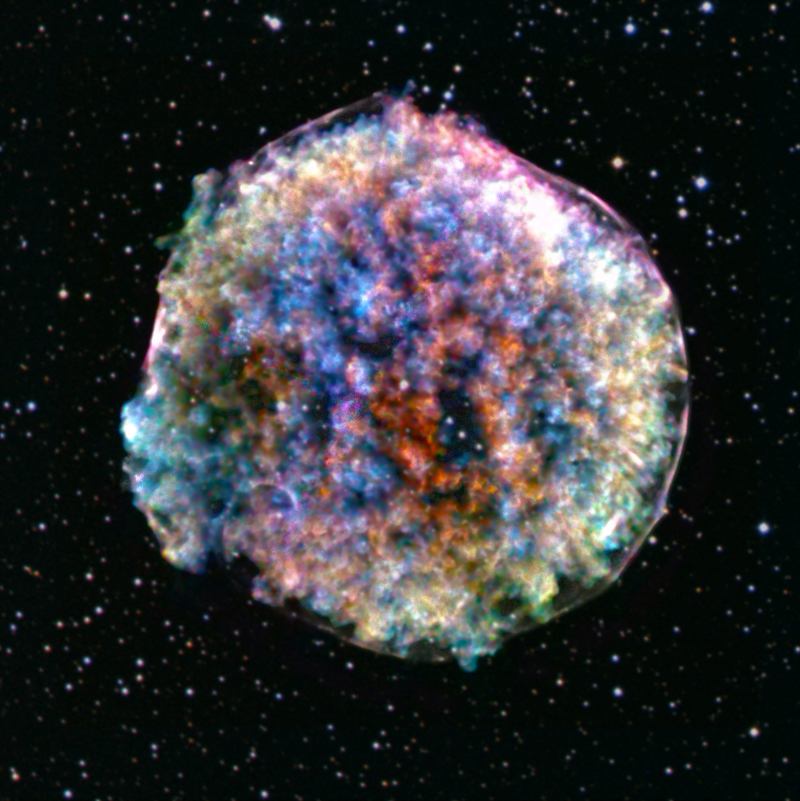
It’s possible that more white dwarfs, in addition to WDJ0551+4135, are the consequence of a merger like that. Other “overweight” and very hot star remnants have also been suspected as having a similar origin by astronomers. Some scholars believe that Tycho’s supernova (SN 1572), one of the most well-known star explosions in history, may have been caused by the collision of two white dwarfs.
Tycho Brahe, a Danish astronomer, saw this phenomenon in the autumn of 1572 in the constellation Cassiopeia. There was a “new star” for a few weeks that was brighter than Venus, and then it slowly went away. Since the firmament was previously regarded as being fixed and God-given, this was revolutionary at the time. Nevertheless, it is now certain that Brahe saw the explosion of a star; the only question is, which kind?
Tycho’s Star was long thought to be a prototypical type 1a supernova, the explosion of a white dwarf that had “overeaten” the material sucked out by its companion star. In 2008, astronomers were able to determine the explosion’s spectrum characteristics from the reflected remaining light. A group of scientists may have found remnants of the companion star in 2011.
The gas cloud around the aftermath of this star explosion was studied in 2017 by astronomers headed by Tyrone Woods of Australia’s Monash University, and they made a surprise discovery. The supernova’s radiation and heat should still be ionizing these gases. However, neutral gas predominated among the explosion remnants, suggesting a lower-energy, colder explosion. Astronomers now believe that what Tycho Brahe saw was not a type 1a supernova but rather the merging of two white dwarf stars.
The last dance of white dwarfs
In 2015, scientists had their first glimpse of the events leading up to the merging of two white dwarfs. They found a pair of these star remnants in the planetary nebula Henize 2-428, and their orbital period is decreasing from its already short 4 hours. According to astronomers, the two white dwarfs may crash into each other in around 700 million years.
A supernova would result from such a collision. Due to the fact that the mass of both white dwarfs, 1.8 solar masses, is more than what is allowed following the Chandrasekhar limit. So the resulting product of the combination would be unstable and likely to explode. David Jones of the European Southern Observatory said, “Until now, the production of Type 1a supernova by the merging of two white dwarfs has been pure theory” (ESO). Henize 2-428 is the excellent duo that makes it possible.
Planets around white dwarfs

When our Sun finally dies, Earth and the other planets in our solar system will perish along with it. For the simple reason that they are already killed and eaten when the sun expands to the red giant phase. If the fading sun has already become a white dwarf, then the inner solar system is mostly empty. But what about the distant planets? When our star dies, will the planets Jupiter, Saturn, and the ice giants Uranus and Neptune still be around?
The ultimate destiny of planets after star death may be inferred from the dust rings and planetary debris previously detected around many white dwarfs. A planetary core may still be concealed behind the debris disk of a star remnant located 410 light-years distant. Only the fact that it was composed of metal allowed it to withstand the tremendous tidal pressures near the white dwarf.
The white dwarf G29-38 is approximately 44 light-years distant, allowing astronomers to make the first direct observations of the gravitational attraction of a white dwarf on neighboring planetary remains. The Chandra X-ray telescope at NASA discovered several X-ray outbursts on the white dwarf’s surface. This radiation has been traced back to planetary debris impacting the white dwarf based on its spectra. White dwarfs are thought to be responsible for eating the remnants of their planet systems, and this finding gives the first direct confirmation of this, according to Tim Cunningham of the University of Warwick.
The survivors
Nonetheless, there is always the chance of there being survivors. Approximately 6,500 light-years distant, the white dwarf MOA-2010-BLG-477Lb has a planetary partner in the form of a gas giant 1.4 times the mass of Jupiter. For the first time, it has been confirmed that planets may survive the death of their star provided they circle at a great distance, as explained by Joshua Blackman of the University of Tasmania.
However, the gas giant’s orbit is very close to the white dwarf, at just 2.80 AU. That’s roughly where the asteroid belt is in our solar system, placing it much too near the star for it to have survived stellar death. Astronomers, however, believe that the planet’s orbit was originally farther away and that it was only drawn closer to the star after the birth of the white dwarf.
Habitable planets near the stellar remnant
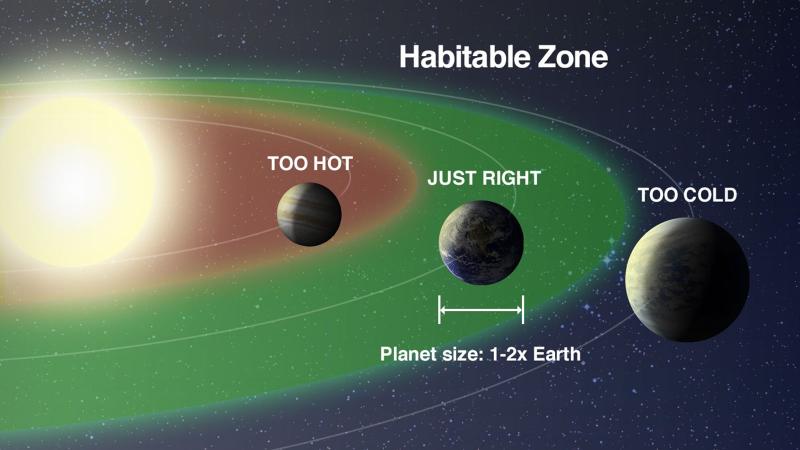
Recent research headed by University College London’s Jay Farihi suggests that white dwarfs may be surrounded by habitable planets. Telescopes from Chile’s La Silla Observatory and NASA’s TESS satellite telescope observed the 117 light-years distant white dwarf WD1054-22 and saw something unusual: every 25 hours, the light from this star remnant is muted by 26 clouds of debris linked together like a string.
Astronomers believe that the debris’s regular arrangement is due to the influence of a planet that is now unseen to their eyes. This object, which may be around the size of Earth, would have to circle the white dwarf at a distance of about 2.5 million kilometers. This would put the planet squarely inside the stellar remnant’s habitable zone.
The team believes this celestial object survived the death of the star because it was initially in a very distant orbit around the star. On the other hand, it’s possible that the planet disappeared inside the debris belt and only reappeared when the star died. This is the first planet or other celestial object detected in the habitable zone of a white dwarf, according to Farihi. However, further research is required to validate the presence of this planet near WD1054-22.
Planetary systems with a second life
But the idea that there could be habitable planets surrounding star remnants is both thrilling and surprising. If this were the case, white dwarfs would be both planet-killers and possible life-sustaining havens. These stellar leftovers may, over the course of billions of years, provide light, warmth, and stable circumstances to any planets that survive or develop in their orbit.
In other words, our solar system and many others like it may have a rebirth around a tiny, hot white dwarf when their star dies.
Bibliography
- Henry, T.J. (2009). “The one hundred nearest star systems”.
- Adams, W.S. (1914). “An A-type star of very low luminosity”. Publications of the Astronomical Society of the Pacific. doi:10.1086/122337.
- Woosley, S. E.; Heger, A.; Weaver, T. A. (2002). “The evolution and explosion of massive stars”. Reviews of Modern Physics. doi:10.1103/RevModPhys.74.1015.
- Kilic, M.; Allende Prieto, C.; Brown, Warren R.; Koester, D. (2007). “The lowest mass white dwarf”. The Astrophysical Journal. doi:10.1086/514327.
- Johnson, J. (2007). “Extreme stars: White dwarfs & neutron stars” Ohio State University.





